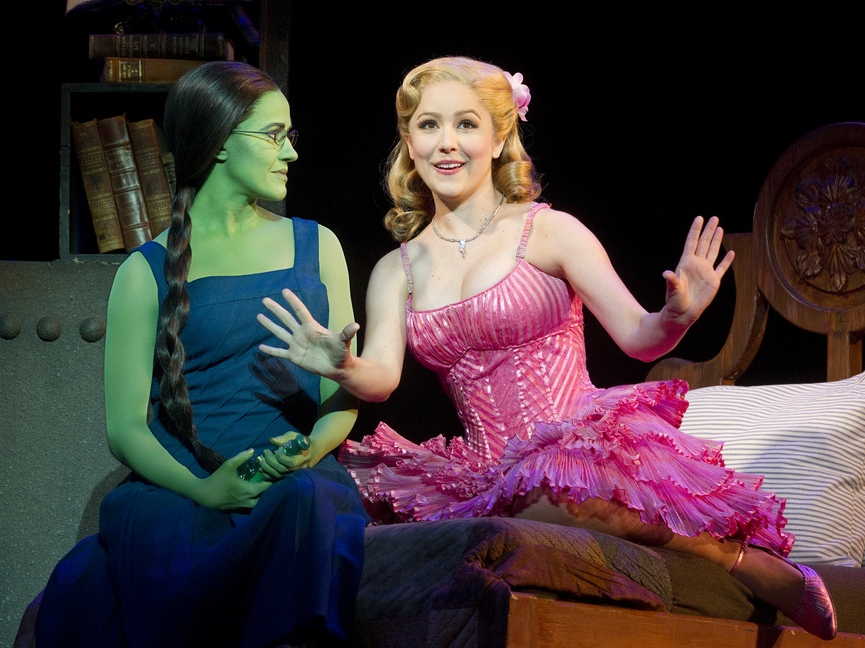
“Wicked” is the Oz for our age.
While the 1939 film version of L. Frank Baum’s “The Wonderful Wizard of Oz” delivered a timeless tale of good vs. evil, the long-running Broadway production makes us melt for Dorothy’s arch-nemesis.
That brand of moral relativism too often torpedoes art, but in the cast of “Wicked,” the production is virtually unsinkable.
“Wicked,” currently playing in Denver but soon to appear in a host of cities including Sacramento, San Diego and Baltimore, is so sturdily constructed as both mass entertainment and political allegory, it can serve as a parable for any age, any administration. But what really matters is the show’s joy quotient, which begins at a ridiculously high note and more or less sustains it for the entire production’s length.
For the uninitiated, “Wicked” opens with the celebration surrounding the death of Elphaba (Mamie Parris), better known to Oz-philes as the Witch who gave Dorothy and Toto fits. We then flash back to Elphaba’s early years, when the teen’s ghastly green skin made her an outcast.
Her father despised her, rallying his love for her handicapped sister. But Elphaba makes a fast friend of the sugar-coated Glinda (Alli Mauzey), who might seem like Oz’s version of a Mean Girl, but she has a heart bigger than the Tin Man’s barrel chest.
Mauzey’s good witch may seem like a one-trick sorceress at first, what with her squeaky voice and obvious laugh lines. But Glinda’s role deepens as the musical wears on, and Mauzey is so clearly up to its challenges. She swats every punch line out of the Buell Theatre, wresting the show out of Parris’ hands. And that’s no simple feat, since Parris’ voice is the ultimate green energy source, an instrument fueling gorgeously sung numbers like “I’m Not That Girl” and “For Good.”
The man who comes between the witches (Andy Kelso) is as complicated as Glinda, and Kelso feeds off the chemistry between the female leads.
“Wicked” shrewdly fuses its story to the classic “Oz” structure, and despite some telling conflicts, the marriage is mostly successful. Just don’t over think the Scarecrow’s original character arc, or how “Wicked” downplays the Witch’s dastardly behavior toward poor Dorothy.
The stage and costumes are top notch, the former’s collection of clock gears enhancing the sense of doom captured in the story’s tragic opener. And kudos to the performers bringing the witch’s flying monkeys to vivid life. The creatures look positively simian, and their theatrics give the otherwise glossy production an edge. A new generation of children might clutch their covers at night after watching them dart across the stage.
“Wicked” grows more rewarding in its second half, even while the bond between the witches takes a somber turn. Oz (Mark Jacoby) cautions us about the role citizens play in society, while we see how difficult it can be to resist the lure of fame and acceptance on a cultural scale.
The musical blends the commentary into the story in such a cohesive way, with only a classroom set piece temporarily breaking the spell.
“Wicked” asks us to reconsider evil, but it’s far more effective in showing how repurposing a beloved story needn’t be a fool’s errand. “Wicked” connects with a story near and dear to our hearts, but the show can also proudly stand on its own.

COMMENTS
Please let us know if you're having issues with commenting.